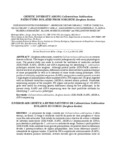Por favor, use este identificador para citar o enlazar este ítem:
http://www.alice.cnptia.embrapa.br/alice/handle/doc/490492Registro completo de metadatos
| Campo DC | Valor | Lengua/Idioma |
|---|---|---|
| dc.contributor.author | FIGUEIREDO, J. E. F. | pt_BR |
| dc.contributor.author | DEPAOLI, H. C. | pt_BR |
| dc.contributor.author | COELHO, V. T. da S. | pt_BR |
| dc.contributor.author | CASELA, C. R. | pt_BR |
| dc.contributor.author | FERREIRA, A. da S. | pt_BR |
| dc.contributor.author | GUIMARAES, C. T. | pt_BR |
| dc.contributor.author | GOMES, E. A. | pt_BR |
| dc.contributor.author | BRESSAN, W. | pt_BR |
| dc.date.accessioned | 2011-04-10T11:11:11Z | pt_BR |
| dc.date.available | 2011-04-10T11:11:11Z | pt_BR |
| dc.date.created | 2007-03-22 | pt_BR |
| dc.date.issued | 2006 | pt_BR |
| dc.identifier.citation | Revista Brasileira de Milho e Sorgo, Sete Lagoas, v. 5, n. 2, p. 304-318, 2006. | pt_BR |
| dc.identifier.uri | http://www.alice.cnptia.embrapa.br/alice/handle/doc/490492 | pt_BR |
| dc.description | Sorghum anthracnose, caused by Colletotrichum sublineolum is a serious disease in Brazil. The fungus is highly variable pathogenically with many physiological races. The present study was made to evaluate the usefulness of molecular methods (SDS-PAGE, RAPD, ARDRA and rDNA sequencing) for identifying C. sublineolum pathotypes isolated from sorghum. Although protein profile (SDS-PAGE) showed a relative low level of polymorphism, differences could be observed due to presence/absence of some polypeptides as well as to intensity of some bands among pathotypes. DNA profile of arbitrarily amplified sequences (RAPD) using sixteen random primers revealed a high degree of polymorphism while amplified rDNA (ITS region and 18S gene) digested with six different restriction enzymes (ARDRA) showed similar patterns. Nucleotide sequencing analysis of the complete ITS region and partial sequencing of 18S rRNA gene were useful for revealing genetic differences among the five pathotypes. In the present study, RAPD and rDNA sequencing were the most profitable methods for identifying C. sublineolum pathotypes. A antracnose do sorgo, causada por Colletotrichum sublineolum, é séria doença, no Brasil. O fungo é altamente variável do ponto de vista patogênico e várias raças têm sido noticiadas. Este estudo foi realizado com o objetivo de avaliar a utilidade de métodos moleculares (SDS-PAGE, RAPD, ARDRA e seqüenciamento de rDNA) para identificar patótipos de C. sublineolum isolados do sorgo. Embora o perfil protéico (SDS-PAGE) tenha mostrado baixo grau de polimorfismo, foi possível observar diferenças devido à presença/ausência de alguns polipeptídios, bem como diferenças quanto à intensidade de algumas bandas. O perfil de DNA amplificado arbitrariamente (RAPD), usando dezeseis primers aleatórios, revelou elevado grau de polimorfismo entre os patótipos, enquanto que o produto da amplificação de rDNA (região ITS e gene 18S), digerido com seis enzimas de restrição diferentes (ARDRA), apresentou padrão similar. Análise de nucleotídeos da seqüência completa da região ITS e do seqüenciamento parcial do gene 18S rRNA revelaram diferenças genéticas entre os cinco patótipos. Entre os métodos testados no presente estudo, RAPD e seqüenciamento de rDNA foram mais efetivos para identificar patótipos de C. sublineolum. | pt_BR |
| dc.language.iso | eng | eng |
| dc.rights | openAccess | eng |
| dc.subject | SDS-PAGE | pt_BR |
| dc.subject | RAPD | pt_BR |
| dc.subject | ARDRA | pt_BR |
| dc.subject | seqüenciamento de rDNA | pt_BR |
| dc.title | Genetic diversity among Colletotrichum sublineolum pathotypes isolated from sorghum (Sorghum bicolor). | pt_BR |
| dc.type | Artigo de periódico | pt_BR |
| dc.date.updated | 2018-05-25T11:11:11Z | pt_BR |
| dc.subject.thesagro | Antracnose | pt_BR |
| dc.subject.thesagro | Doença de planta | pt_BR |
| dc.subject.thesagro | Sorghum Bicolor | pt_BR |
| dc.subject.nalthesaurus | Colletotrichum sublineolum | pt_BR |
| riaa.ainfo.id | 490492 | pt_BR |
| riaa.ainfo.lastupdate | 2018-05-25 -03:00:00 | pt_BR |
| dc.identifier.doi | http://dx.doi.org/10.18512/1980-6477/rbms.v5n2p304-318 | pt_BR |
| dc.contributor.institution | JOSE EDSON FONTES FIGUEIREDO, CNPMS; CLAUDIA TEIXEIRA GUIMARAES, CNPMS; ELIANE APARECIDA GOMES, CNPMS. | pt_BR |
| Aparece en las colecciones: | Artigo em periódico indexado (CNPMS)  | |
Ficheros en este ítem:
| Fichero | Descripción | Tamaño | Formato | |
|---|---|---|---|---|
| Geneticdiversity2.pdf | 997.05 kB | Adobe PDF |  Visualizar/Abrir |









